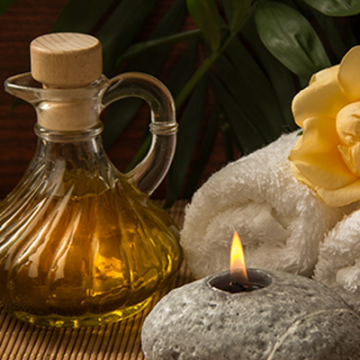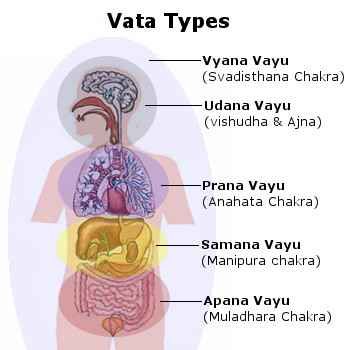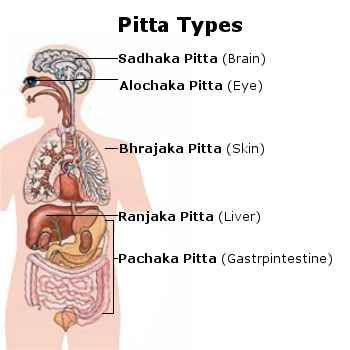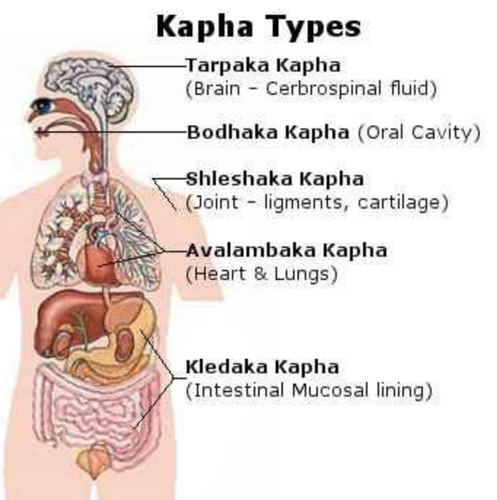PARIJATAK AYURVEDA PRINCIPLES
The word “Ayurveda” is the combination of two words.First is Ayu means life and second is veda means knowledge.The whole knowledge about life and its related things explained in Ayurveda Principles.
According to Charaka Samhita, “life” is defined as the “combination of the healthy body, healthy sense organs, healthy mind and healthy soul.”
There are major three books in which all types of things related to Ayurveda are explained .They are
1 Charak Samhita
2 Sushrut Samhita
3 Vagbhat Samhita

Branches Of Aurvedas-
There are eight branches of Ayurveda.which are –
1 Kayachikitsta Tantra- Related to internal medicines
2 Shalya Tantra- related to surgery
3 Shalakya Tantra- related to diseases of Ears,Eyes,nose and troat
4 Kaumarbhritya- related to pediatric diseases
5 Agad tantra- related to toxicology
6 Vajikaran- Related to purification of genital organs
7 Rasayan tantra- Realted to health and longitivity
Aim of Ayurveda-
“SWASTHASYA SYASTHYA RAKSHANAM, AATURASHCHA VIKAR PRASHAMANAM”,
It means: “Preservation and maintainance of health of healthy once and relief from disease in diseased person.
Basic Principles of Ayurveda-
- 1. Panchmahabhuta Theory
- 2. Tridosha Theory
- 3. Sapta dhatu theory
Panchamahabhoot Theory
The five elements are earth (prithvi), water (jal), fire (Agni or tej), air (Vayu) and ether or space (akash) are collectively termed as Panchmahabhuta. Accordind to Ayurveda every matter in these universe i.e all living and non-living things in the universe contains all of these five elements. Depending on the predominance of the content, the matter is classified as Parthiva, Apya, Taijasa, Vayaviya and Akashiya.
The costituation of people is divided in to Vata (ether/air), Pitta (fire) and Kapha (water/earth). And these three doshas are responsible for all the function and structure of the body .
Evolution of Matter
Akash Mahabhuta means hallow space. Main sense organ of it is ear and shabda is its power. Apratighata is its main property.
Vayumahabhuta-It is formed from Akash mahabhuta.
Main sense organ of it is skin and its power is Sparsh.Chalatwa or movability is its chief property.
Agnimahabhoota -Derived from vayu mahabhuta.
The main sense organ of it is eyes and power of it is Roop. and the chief property is heat (Ushnatwa).
Jala Mahabhuta -derived from agni mahabhuta.The main sense organ is Jihva and power is Taste (Rasa) and liquidity (DraVatawa) is the chief property.
Prithwimahabhuta- derived from jala mahabhuta.The main sense organ is nose and power is Smell or gandha.Roughness (Kharatwa) is the chief property.
| # | Mahabhuta / Element | Chief sense attribute | Chief Property |
|---|---|---|---|
| 1 | Space / Ether/ Akash | Shabda | Apratighatatwa |
| 2 | Air / Vayu | Shabda, Sparsha | Chalatwa / Mobility |
| 3 | Fire /Agni | Shabda, Sparsha, Roop | Ushnatwa/ Heat |
| 4 | water/Jal | Shabda, Sparsha, Roop, Rasa | DraVatawa /Liquidity. |
| 3 | Earth/ Prithvi | Shabda, Sparsha, Roop, Rasa, Gandha | Kharatwa/ Roughness |
- All the body channels, pores or empty spaces are formed from Akash tatva.
- Vayu is responsible for alltypes of movement in body. Movement like motor or sensory nerve impulses,
- food through G.I.T, movements of the joints etc.
- Agni provides the energy which is essential for activities in our body.Like for digestion of food or metabolism of food agni is required.
- All liquid constituents in body made up of jala tatva. Our blood, lymph, saliva,harmones etc apa Mahabhuta brings and keeps things together.
- Earth represents the solid state of matter. It is responsible for stability and rigidity of body. In our body, the parts such as bones, teeth, cells and tissue indicate earth element.
Tridosha Theory
Accordind to Ayurveda health is exist when there is equilibrium of doshas.
The tridosha includes:
- 1. Vata:Vata is required for mobilization and functioning of the nervous system.
- 2. Pitta: Pitta is essential for digestion and metabolism process.
- 3. Kapha:Kapha is the water principle which relates to mucous, lubrication and the carrier of nutrients into the arterial system.
Vata- the catabolic dosha
Vata is the combination of vayu and akash tatva.
According to the tridosha theory, this dosha is associated with all the movement in the body, may it be spiritual; or physical, Vata also controls and governs the other two doshas.
The five sub-doshas of Vata includes:
Diseases are classified according to the three doshas alone, ignoring traditional concerns and deeper causes and treated generically.
- Prana- controller of the senses, is found in the head;
- Udana- controls voice and intellectual abilities, is found in the chest area;
- Vyana- controls all the controlled bodily actions, is found in the heart;
- Apana- controls discharges through the urinary tract, is found in the anal region, and
- Samana- controls digestive processes, is found in the stomach.


Pitta- the metabolic dosha
It is responsible for changes.All the processes like metabolism, changes and heat in the body are governed by Pitta. It is also responsible for intellect and perception.
This is further divided into five sub-categories:
- Ranjak- production of Rakta or blood and is found in the stomach;
- Aalochak- provision of sight, and is found in the eyes;
- Sadhak-although found in the heart, it governs the psychological capabilities;
- Pachak- located in the duodenum part of the small intestines, it mainly maintains digestive functioning, and
- Bhrajak- found in the skin, it controls skin pigmentation.
Kapha- anabolic dosha
It is formed from prithvi and jala tatva.
The role of this dosha is to provide structure and vitality to the mind and body. It is also responsible for emotions like love, envy, forgiveness etc.
The five sub-doshas of Vata includes:
- Kledak- for assimilation of food, and is found in the stomach;
- Shleshak- for lubrication of joints, and is found in all the joints of the body;
- Tarpak- governs intelligence, and is found in the head;
- Avalambak- lubricated the heart and throat, and is found in the chest;
- Bodhak- governs and is found in the sensory organ of taste.

Relation between the tridosha and Ayurvedic treatment
According to Ayurveda any disease in the body whether it is physical or mental it is caused by the imbalance in the tridosha. Hence the main goal of Ayurveda is Balance of tridoshas.
Sapta dhatu Theory
According to Ayurveda, the body is constituted by seven tissues (or Dhatu in Sanskrit).
Sapta – seven , Dhatu – Tissue
Dhatus formation
- The food which we can eat was digested after some time was converted in to three major parts
- The gross undigested food is converted into waste prodcuts (faeces);
- The middle is converted in one of the tissues or Dhatus,
- The subtlest form gets converted into ojasa (sara of the seven dhatu) or the immunity.
As per rule and regulation, food we eat is firstly converted into Rasa. Once there is formation of Rasa, the remaining gets converted into Rakta. Once there is formation of Rakta, the remaining gets converted into Mamsa. Once there is formation of Mamsa, the remaining gets converted into Meda. Once there is formation of Meda, the remaining gets converted into Asthi. Once formation of Asthi is over, the remained gets converted into Majja. Once there is formation of Majja, the remaining gets converted into Shukra.
Dhatvagni
All the seven element tissues of the body contain their own agni to metabolize the nutrients supplied to them through channels of circulation.
- Rasagni in the Rasa Dhatu or plasma
- Raktagni in the Rakta Dhatu or blood
- Mamsagni in the Mamsa Dhatu or muslce
- Medagni in the Meda Dhatu or fat
- Asthyagni in the Asthi Dhatu or bone
- Majjagni in the Majja Dhatu or bone-marrow
- Shukragni in the Shukra Dhatu or reproductive fluid.
The seven Dhatus
The seven Dhatus:
- Rasa – Plasma
- Rakta – Blood Tissue
- Mamsa – Muscle Tissue
- Meida – Adipose Tissue, Fat
- Asthi – Bone Tissue
- Majja – Bone Marrow, Nerve Tissue
- Shukra – Semen, Reproductive Tissue
RASA-PLASMA
Rasa represents the first dhatu. Rasa is the major and primary constituent of the human body. Rasa represents the fluids (extra cellular and intracellular parts) of the human body and it mainly concerned with nourishment and strengthening the blood. Once the process of digestion of the food is complete, it gets converted into a liquid (chyle) which undergoes transformed into blood tissue.
RAKTA-BLOOD
When the rasa or plasma undergoes refining, then it is known as rakta dhatu (blood tissue). Rakta dhatu is mainly concerned with nourishment of the body by carryng macro and micro-nutrients to the body-cells and tissues of the human body through the circulatory system or the blood vessels. Rakta dhatu is preserver of life and plays major role in gaseous exchange.
MEDA-FAT
Meda tissue represents the adipose tissue or the fatty tissue. When the mamsa dhatu undergoes refining, then it is known as meda dhatu. Meda dhatu plays significant role in lubrication of the body parts. Meda dhatu is also important constitutent of the the brain, nervous tissue and the spinal cord. Most importantly, Meda dhatu is helpful in the maintainence of the internal body temperature.
MAJJA-BONE MARROW
When the asthi dhatu undergoes refining, then it is known as majja-dhatu. The Majja dhatu is know as as myeloid tissue. Myeloid tissue either takes the yellow or red colour. Myeloid tissue stay within the bone cavity also found inside the spinal cord and the brain.
MAMSA-MUSCLES
Mamsa represents the muscle that enters into the constituents of the internal organs of the human body. Mamsa dhatu is derived from the rakta dhatu and constitutes the cover of structure and bone of the human-body.
SHUKRA-REPRODUCTIVE FLUID OR SEMEN
Skukra-dhatu is is chiefly responsible for the reproductive capacity of the human body. In fact, skukra-dhatu is most refined product of all the preceding dhatus. In males, it is known as sukra (includes the sperm). In females, it is known as sronita (includes the ovum).
ASTHI-BONE
When the meda dhatu undergoes refining, then it is known as asthi- dhatu. The Asthi dhatu is mainly concerned with the basic structure to the human body. Asthi dhatu include all the cartilaginous components in the human body.
Ojas
When all the dhatu undergoes refining, then it is known as ojasa. It is also known as mahadhatu.